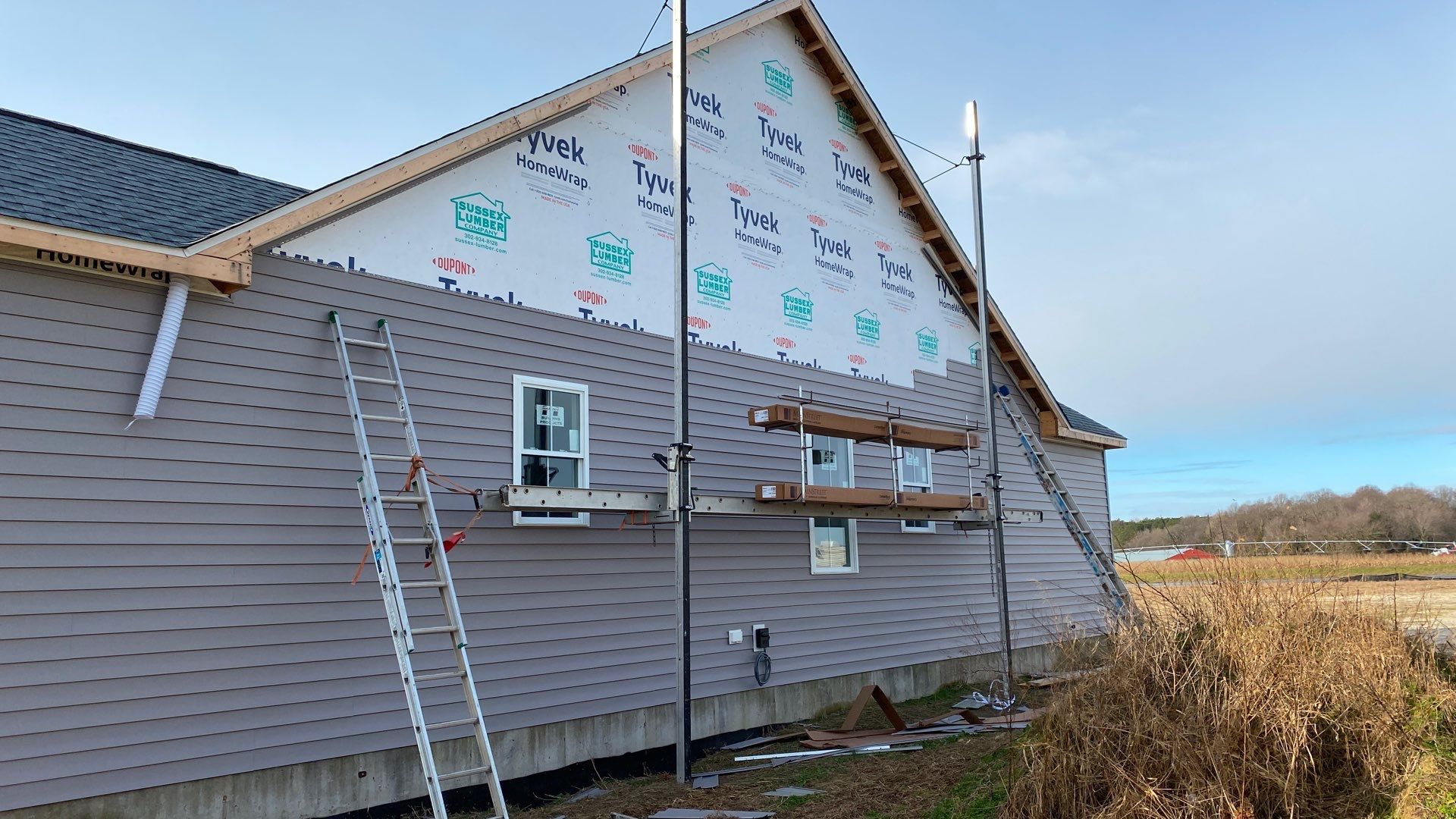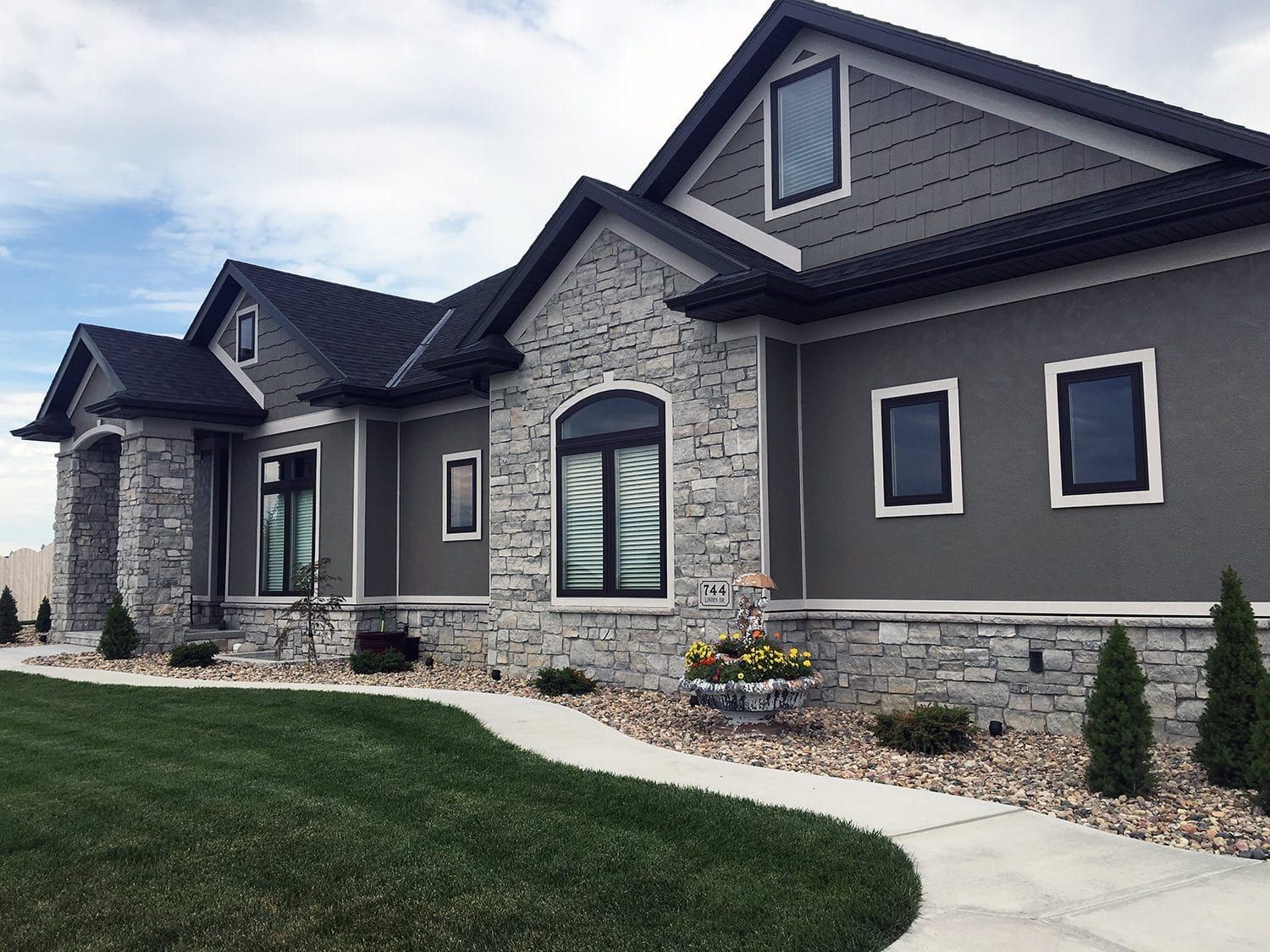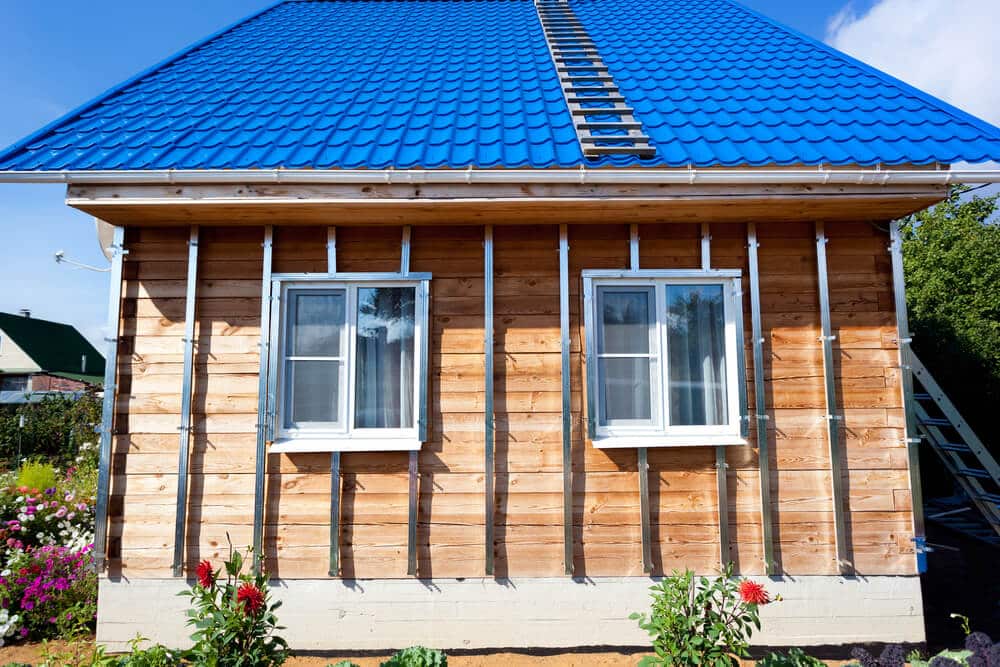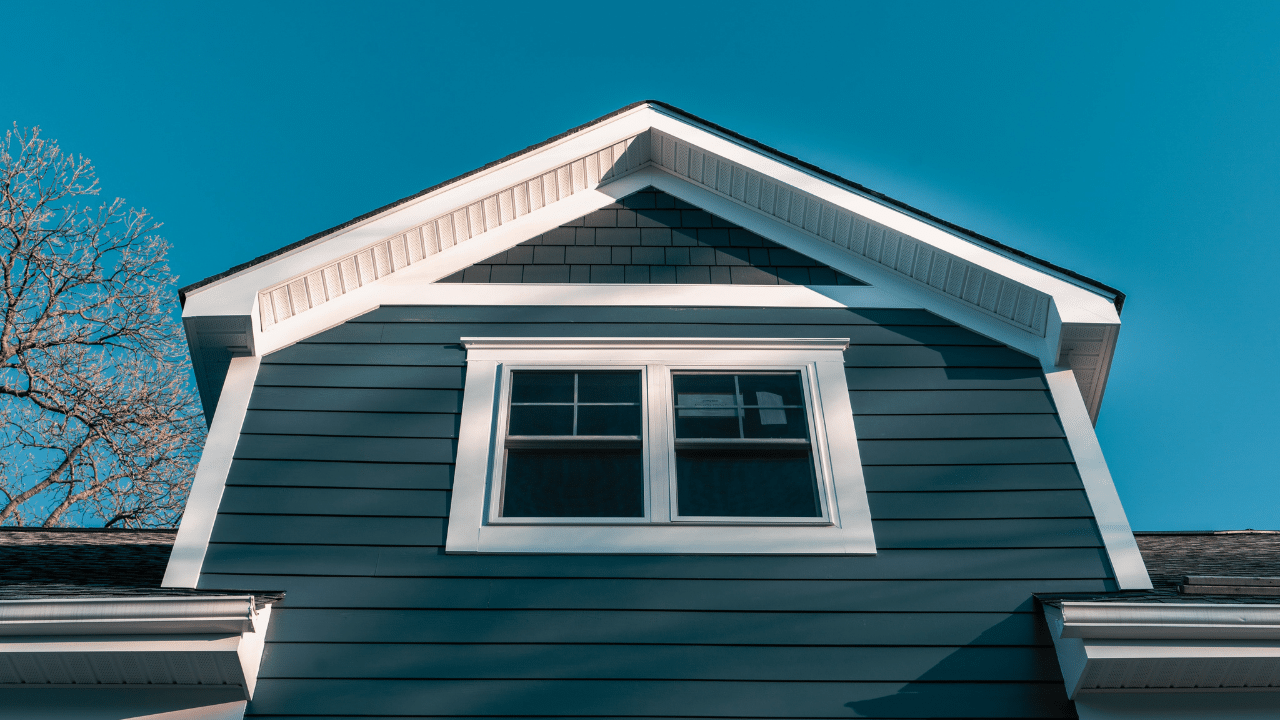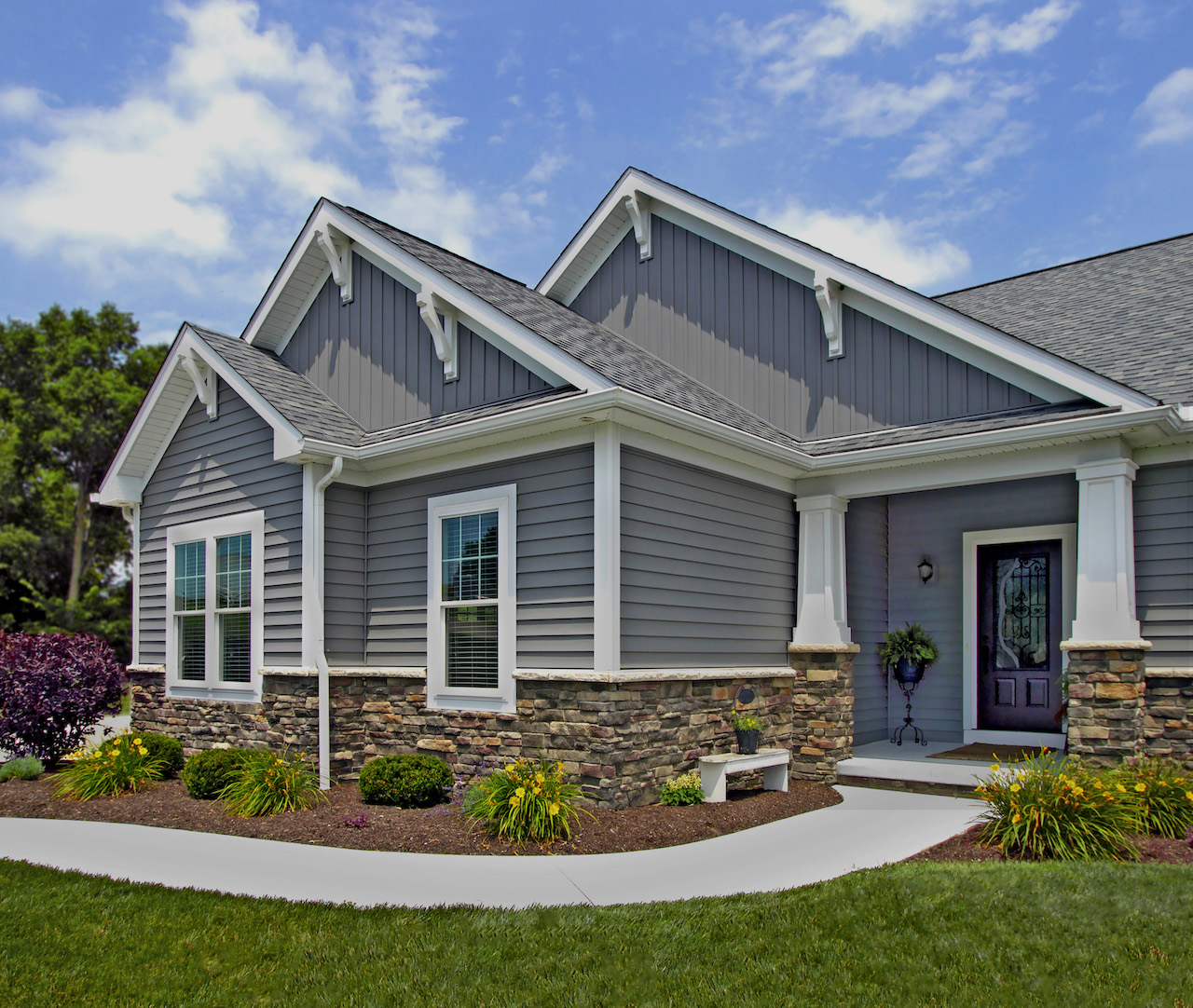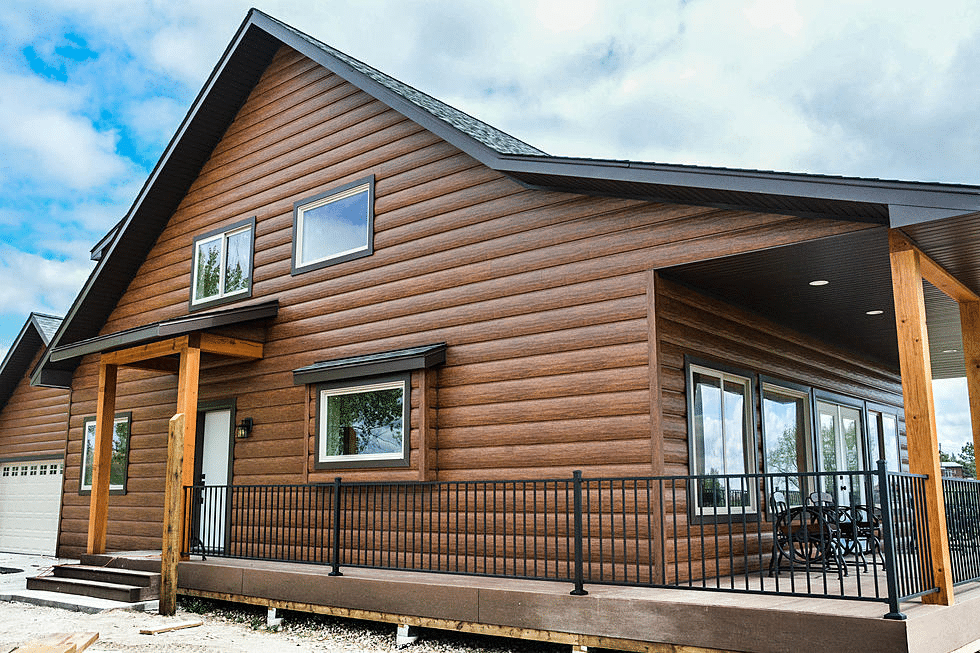Wood Insulated Siding: A Comprehensive Guide
Wood insulated siding offers a unique blend of aesthetic appeal and energy efficiency. This innovative building material combines the natural beauty of wood with the insulating properties of a core material, resulting in a visually striking and environmentally responsible exterior cladding option. We’ll explore its composition, installation, maintenance, and overall value proposition, helping you determine if it’s the right choice for your next project.
From the selection of wood types and insulation cores to the intricacies of installation and long-term maintenance, this guide provides a thorough understanding of wood insulated siding. We’ll compare its performance against other siding materials, analyze its cost-effectiveness, and delve into its environmental impact, giving you the information needed to make an informed decision.
Material Composition and Properties of Wood Insulated Siding
Wood insulated siding offers a blend of aesthetic appeal and energy efficiency, making it a popular choice for homeowners. Understanding its composition and properties is crucial for making informed decisions about its suitability for a particular project. This section will delve into the materials used, their performance characteristics, and a comparison with other siding options.
Types of Wood Used in Insulated Siding
Several wood types are employed in the construction of insulated siding, each possessing unique characteristics that influence durability and appearance. Common choices include cedar, redwood, and fiber cement composites incorporating wood fibers. Cedar, prized for its natural beauty and resistance to decay, is often a premium option. Redwood, known for its strength and longevity, provides a similar high-end alternative. Fiber cement siding, while not purely wood, often incorporates wood fibers for improved aesthetics and workability, while maintaining the strength and durability of cement. The selection of wood type significantly impacts the overall cost and performance of the insulated siding.
Insulation Core Materials in Wood Insulated Siding
The insulating core is a critical component, dictating the thermal performance of the siding. Common core materials include expanded polystyrene (EPS), extruded polystyrene (XPS), and polyurethane foam. EPS, a lightweight and cost-effective option, offers good insulation properties. XPS, possessing higher compressive strength and moisture resistance, is often preferred in applications demanding greater durability. Polyurethane foam, known for its superior R-value per inch, provides excellent thermal performance but may be more expensive. The choice of core material directly impacts the R-value and overall cost of the insulated siding system.
Thermal Performance Compared to Other Siding Options
Wood insulated siding generally exhibits superior thermal performance compared to traditional wood siding or vinyl siding. The integrated insulation core significantly reduces heat transfer, leading to lower energy consumption for heating and cooling. A direct comparison would reveal that wood insulated siding boasts a higher R-value, resulting in better energy efficiency. For example, a typical wood insulated siding system might achieve an R-value of 15 or higher, while traditional wood siding offers minimal insulation, and vinyl siding typically falls within a lower R-value range. This difference translates to substantial energy savings over the lifespan of the building.
Moisture Resistance Properties of Wood Insulated Siding
The moisture resistance of wood insulated siding varies depending on the type of wood and the core insulation material used. Proper installation and the use of moisture barriers are crucial for preventing water damage. While cedar and redwood naturally possess some inherent resistance to decay, the insulation core plays a significant role in preventing moisture penetration. XPS foam, for instance, offers superior moisture resistance compared to EPS. Careful consideration of these factors is essential to ensure the long-term durability and performance of the siding.
Comparison of Density, R-Value, and Cost
The following table provides a comparison of density, R-value, and estimated cost for various wood insulated siding options. Note that costs can vary based on region, supplier, and specific product features.
| Siding Type | Density (lbs/ft³) | R-Value (per inch) | Estimated Cost (per sq ft) |
|---|---|---|---|
| Cedar with EPS Core | ~30 | ~4-5 | $8-$12 |
| Redwood with XPS Core | ~35 | ~5-6 | $10-$15 |
| Fiber Cement with Polyurethane Core | ~45 | ~7-8 | $15-$20 |
Manufacturing Process and Installation Techniques
Wood insulated siding offers a compelling blend of aesthetics and energy efficiency. Understanding its manufacturing and installation is key to realizing its full potential. This section details the process from raw materials to finished product, along with best practices for a successful installation.
Wood Insulated Siding Manufacturing
The manufacturing process typically begins with the selection and preparation of high-quality wood. This often involves kiln-drying to reduce moisture content and prevent warping or cracking. Next, the wood is cut and shaped to the desired profile, often using computer-numerical-controlled (CNC) machinery for precision and consistency. Simultaneously, the insulating core is manufactured, usually from expanded polystyrene (EPS) or polyurethane foam. This core material is then bonded to the wood cladding, often using a strong adhesive. Finally, the assembled panels undergo a finishing process which may include priming and painting or staining, depending on the desired final appearance. Quality control checks are implemented at each stage to ensure dimensional accuracy and structural integrity.
Installation Techniques for Wood Insulated Siding
Proper installation is crucial for achieving optimal performance and longevity. This includes careful planning, precise measurements, and the use of appropriate tools and materials. The process typically begins with preparing the building’s exterior, ensuring a clean, level surface. Next, the installation of starter strips provides a consistent base for the siding panels. Panels are then installed horizontally, overlapping each other according to manufacturer’s instructions. Special attention should be paid to corners and window/door openings, often requiring trim pieces and careful sealing to prevent water intrusion. Finally, any necessary finishing touches, such as caulking and trim installation, are completed.
Challenges and Solutions During Installation
While generally straightforward, wood insulated siding installation can present some challenges. Uneven wall surfaces may require additional shimming or furring strips to create a level base. Working in extreme weather conditions (extreme heat or cold) can affect adhesive performance and material expansion/contraction. Improper fastener placement can lead to panel damage or water leakage. Addressing these challenges involves meticulous preparation, the use of appropriate materials like shims and flashing, and adherence to manufacturer’s recommendations regarding temperature and fastener placement.
Fastener and Sealant Selection and Use
The proper choice and application of fasteners and sealants are essential for watertightness and long-term performance. Stainless steel fasteners are generally recommended for their resistance to corrosion. Fasteners should be driven straight and evenly to avoid damaging the siding panels. High-quality, weather-resistant sealants should be used at all joints and seams, paying particular attention to areas prone to water penetration, such as corners, window and door frames, and around flashing. The sealant should be applied in a smooth, continuous bead, ensuring complete coverage of the joint.
Essential Tools for Installation
Careful planning and the right tools ensure a smooth installation. A list of essential tools includes:
- Measuring tape
- Level
- Circular saw or miter saw
- Drill with appropriate drill bits
- Hammer
- Caulk gun
- Utility knife
- Safety glasses and gloves
Additional tools may be required depending on the complexity of the project and specific siding design.
Maintenance and Longevity
Wood insulated siding, while offering superior insulation and aesthetic appeal, requires regular maintenance to ensure its longevity and continued performance. Proper care will protect your investment and significantly extend the lifespan of your siding, saving you money on repairs and replacements down the line. Neglecting maintenance can lead to premature deterioration, costly repairs, and ultimately, a less attractive home exterior.
Recommended Maintenance Schedule
A regular maintenance schedule is crucial for preserving the beauty and functionality of wood insulated siding. This involves a combination of cleaning, inspection, and preventative treatments. Following a yearly schedule, as outlined below, will help keep your siding in top condition for years to come. Remember to adjust the frequency based on your climate and environmental conditions; harsher climates may require more frequent attention.
| Season | Task | Details |
|---|---|---|
| Spring | Cleaning | Gently wash the siding with a soft brush and mild detergent solution. Rinse thoroughly with water. Inspect for any loose or damaged siding. |
| Summer | Inspection | Check for signs of insect infestation, rot, or damage. Address any issues promptly. Consider applying a water repellent if needed, especially in areas with heavy rainfall. |
| Autumn | Preparation for Winter | Remove any debris or leaves that may accumulate against the siding. Inspect for cracks or gaps that could allow moisture penetration. |
| Winter | Snow and Ice Removal | Carefully remove any accumulated snow or ice to prevent damage to the siding. Avoid using sharp tools that could scratch the surface. |
Cleaning and Protecting Wood Insulated Siding
Cleaning your wood insulated siding should be a regular part of your maintenance routine. A simple cleaning with a soft-bristled brush, mild detergent, and water will remove dirt, grime, and pollen. Avoid using high-pressure washers, as these can damage the siding’s surface. For stubborn stains, a solution of bleach and water (always following product instructions carefully) can be effective, but ensure thorough rinsing afterward. After cleaning, applying a high-quality wood sealant or water repellent will help protect the siding from moisture damage and UV degradation. This should be done annually or as needed, particularly in regions with harsh weather conditions.
Common Signs of Damage and Their Repair
Several signs indicate potential damage or deterioration in wood insulated siding. These include cracking, warping, discoloration, rot, insect infestation, and loose or missing sections. Cracks and warping can often be repaired with wood filler and careful sanding, followed by repainting or restaining. Rotted areas will require more extensive repair, possibly involving replacing damaged sections. Insect infestations need prompt attention, often requiring professional pest control treatment. Loose or missing siding pieces should be reattached or replaced immediately to prevent further damage. Regular inspections will help identify these issues early, allowing for timely and cost-effective repairs.
Preventative Measures to Extend Lifespan
Taking preventative measures significantly extends the life of your wood insulated siding. Proper ventilation around the siding is crucial to prevent moisture buildup. Regularly inspect and clean gutters to ensure proper drainage and prevent water from accumulating against the siding. Trimming overhanging branches helps prevent damage from falling debris and keeps the siding dry. Finally, prompt repair of any damage prevents minor problems from escalating into major, costly repairs. By addressing issues promptly, you can safeguard the longevity and aesthetic appeal of your wood insulated siding.
Environmental Impact and Sustainability
Wood insulated siding presents a complex environmental profile, balancing benefits and drawbacks related to its production, use, and disposal. Understanding its full life cycle is crucial for assessing its overall sustainability compared to alternative siding materials.
The environmental impact of wood insulated siding hinges on several factors, including the sourcing of the wood, the manufacturing process, and its eventual end-of-life management. While wood is a renewable resource, its harvesting and processing still have environmental consequences. Conversely, the insulating properties of the siding can lead to reduced energy consumption in buildings, offsetting some of these negative impacts.
Environmental Benefits of Wood Insulated Siding
Wood is a carbon-neutral building material. During its growth, trees absorb carbon dioxide from the atmosphere. This stored carbon remains sequestered in the wood siding, reducing the overall carbon footprint of the building. Furthermore, the insulating properties of wood insulated siding contribute to energy efficiency, lowering the building’s operational carbon emissions through reduced heating and cooling needs. This energy saving effect can significantly outweigh the embodied carbon associated with the material’s production and transportation.
Environmental Drawbacks of Wood Insulated Siding
The harvesting of wood, especially from unsustainable sources, can lead to deforestation, habitat loss, and soil erosion. Manufacturing processes may involve the use of energy and chemicals, generating air and water pollution. The transportation of the siding from the manufacturing facility to the construction site also contributes to greenhouse gas emissions. Finally, improper disposal of wood siding can lead to landfill waste and methane production.
Carbon Footprint Comparison
A comprehensive life cycle assessment (LCA) is necessary for accurate comparison. However, general observations suggest that wood insulated siding often has a lower carbon footprint than materials like vinyl siding, which is derived from petroleum-based plastics with high embodied energy and greenhouse gas emissions during manufacturing. The specific comparison will depend on factors such as the wood species, manufacturing methods, and transportation distances for both wood and vinyl siding. For example, studies comparing wood fiber cement siding to vinyl siding often show a lower carbon footprint for wood fiber cement due to its renewable resource base. However, specific numbers vary widely depending on the study’s methodology and assumptions.
Sourcing and Sustainability of Wood
Sustainable forestry practices are essential for minimizing the environmental impact of wood insulated siding. Sourcing wood from certified sustainable forests, such as those certified by the Forest Stewardship Council (FSC), ensures that the wood is harvested responsibly, minimizing damage to ecosystems and promoting forest regeneration. The use of reclaimed or recycled wood can further reduce the environmental impact. Choosing wood species that grow quickly and require less energy to process also contributes to sustainability.
Recyclability and End-of-Life Management
Wood insulated siding can be recycled or repurposed at the end of its life. Depending on its condition, it may be suitable for use in other construction projects, or it can be processed into biomass fuel. Responsible disposal practices, such as sending it to facilities that can recover energy from waste, minimize its environmental impact. Landfilling should be avoided whenever possible.
Life Cycle Assessment Comparison: Wood Insulated Siding vs. Vinyl Siding
The visual representation would be a bar graph. The X-axis would label the stages of the life cycle: Raw Material Extraction, Manufacturing, Transportation, Installation, Use, and End-of-Life. The Y-axis would represent the environmental impact, measured in kg of CO2 equivalent per square meter of siding. Two bars would represent each stage for both Wood Insulated Siding and Vinyl Siding. The bars representing Vinyl Siding would be significantly taller for the Manufacturing and Raw Material Extraction stages due to the high energy consumption and emissions associated with petroleum-based plastics. The Wood Insulated Siding bars would be taller for the Raw Material Extraction stage if unsustainable forestry practices were used, but shorter overall. The Use stage would show a lower impact for Wood Insulated Siding due to better insulation properties. The End-of-Life stage would show a smaller impact for Wood Insulated Siding if recycled or used for biomass energy compared to Vinyl Siding, which often ends up in landfills. The overall visual would clearly demonstrate the relative environmental impact of each material across its entire life cycle, highlighting the potential for lower environmental impact of wood insulated siding when sustainably sourced and managed.
Cost Analysis and Value Proposition
Wood insulated siding presents a significant investment, but its long-term benefits and potential return on investment (ROI) warrant careful consideration. Understanding the cost breakdown, comparing it to alternatives, and assessing its impact on property value are crucial for making an informed decision. This section will analyze these aspects to help you determine if wood insulated siding is the right choice for your project.
Cost Components of Wood Insulated Siding Installation
Several factors contribute to the overall cost of installing wood insulated siding. These include material costs (the siding itself, insulation, and fasteners), labor costs (skilled installers are needed for proper installation), permits and inspections, and any necessary preparation work, such as removing existing siding or repairing underlying sheathing. The cost can also vary depending on the complexity of the project, such as the size of the house and the presence of architectural details. Premium wood species and specialized finishes will also increase the initial cost.
| Cost Component | Estimated Cost per Square Foot (USD) |
|---|---|
| Materials (Siding, Insulation, Fasteners) | $3.00 – $8.00 |
| Labor (Installation, Preparation) | $4.00 – $12.00 |
| Permits and Inspections | $0.50 – $2.00 |
| Waste Removal and Disposal | $0.50 – $1.50 |
| Total Estimated Cost | $8.00 – $23.50 |
Note: These are estimates and actual costs can vary significantly based on location, project specifics, and chosen materials. It is crucial to obtain multiple quotes from reputable contractors for an accurate cost assessment for your specific project.
Comparison with Alternative Siding Options
Comparing wood insulated siding to other options, such as vinyl, fiber cement, or metal siding, requires a holistic approach considering both initial cost and long-term expenses. While vinyl siding might have a lower upfront cost, its shorter lifespan and lower energy efficiency can lead to higher replacement and utility costs over time. Fiber cement offers good durability but typically has a higher initial cost than vinyl. Metal siding is durable and low-maintenance but can be more expensive than wood insulated siding, especially if aesthetics are a priority. Wood insulated siding offers a balance of aesthetics, durability, energy efficiency, and longevity, potentially leading to lower overall long-term costs compared to some alternatives.
Factors Influencing Overall Cost
Material selection significantly impacts the cost. Higher-quality wood species, such as cedar or redwood, are more expensive than pine or fir. The type and thickness of insulation used also affect the price. Labor costs vary based on geographic location, installer experience, and project complexity. Projects requiring extensive preparation work, such as removing existing siding or addressing significant structural issues, will naturally increase the overall cost.
Impact on Property Value
Wood insulated siding can significantly enhance a property’s curb appeal and market value. Its natural beauty and high-quality appearance appeal to many buyers. Studies have shown that energy-efficient improvements, such as those provided by insulated siding, can increase a home’s resale value. For example, a home with well-maintained wood insulated siding in a desirable neighborhood might command a higher selling price compared to a similar home with less attractive or less energy-efficient siding. The improved energy efficiency can also translate to lower utility bills, making the property more attractive to potential buyers.
Summary
Wood insulated siding presents a compelling option for homeowners and builders seeking a durable, energy-efficient, and aesthetically pleasing exterior. By carefully considering the factors outlined in this guide – from material selection and installation to long-term maintenance and environmental impact – you can make a confident choice that enhances both the beauty and value of your property for years to come. Ultimately, the decision hinges on balancing your budget, aesthetic preferences, and commitment to sustainable building practices.



